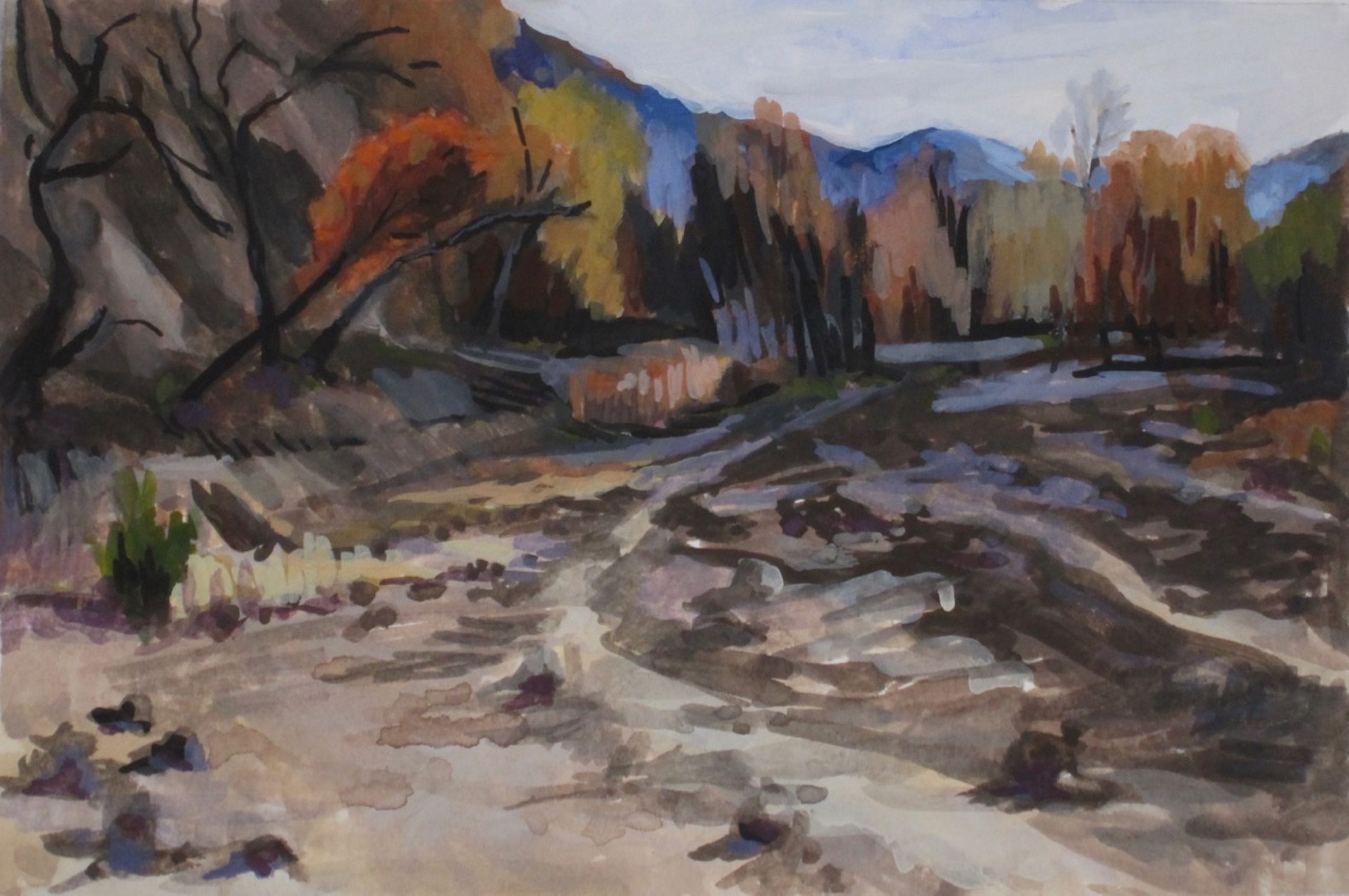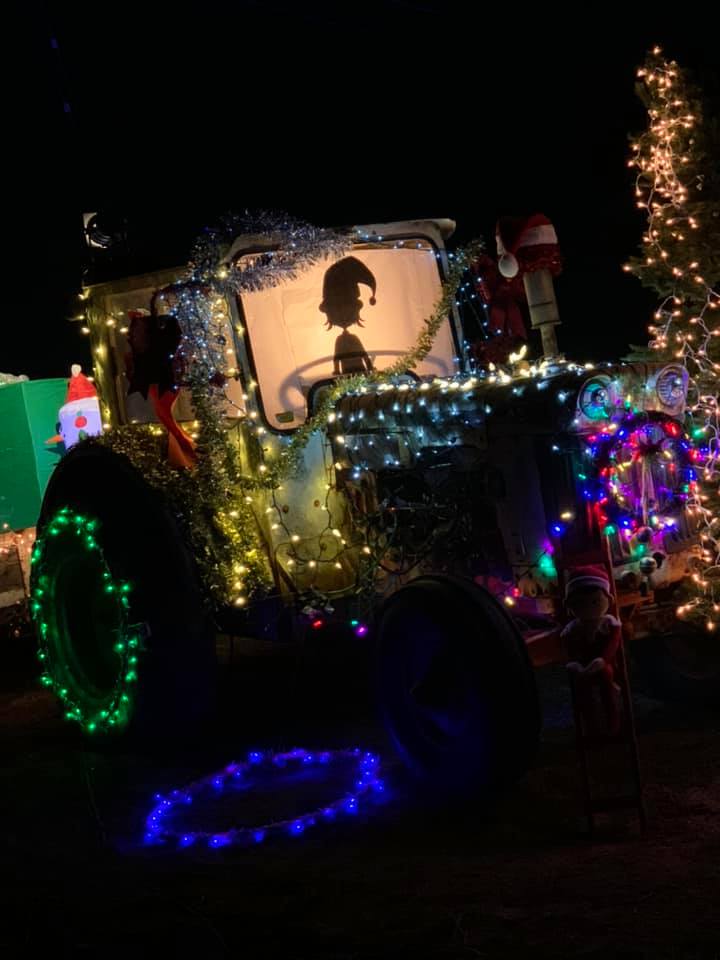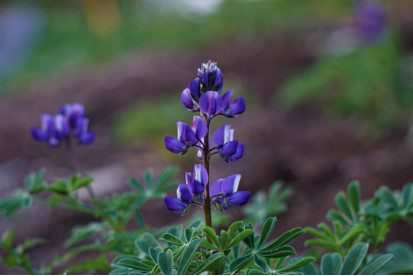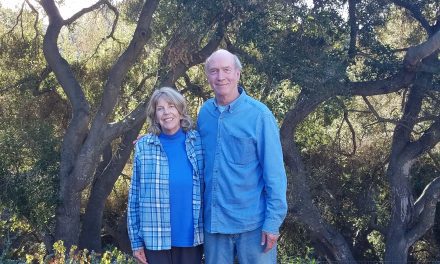Staff Report
In a new art exhibit at the Wildling Museum, six local women explore the journey over one year of the Santa Ynez River and its watershed, all 92 miles of it, from Jameson Lake to Surf Beach.
United by the lesser-known medium of gouache (an opaque watercolor pronounced “gwash”), and the name Rose-Compass, the artists tell the story of the beauty, many uses, and challenges facing the community’s main source of water.
“The River’s Journey: One Year, Six Artists, Ninety-Two Miles” opened in the First Floor Gallery Feb. 17 and runs through July 9.
Connie Connally, Holli Harmon, Libby Smith, Nicole Strasburg, Nina Warner and Pamela Zwehl-Burke each contributed 20 small gouache paintings, plus one larger oil to the show, which is curated by Wildling Executive Director Stacey Otte-Demangate.
Two other works have been contributed by Pennsylvania artist Thomas Paquette, whose gouaches of the Mississippi River inspired the show. All paintings are for sale, and proceeds benefit the Wildling Museum.
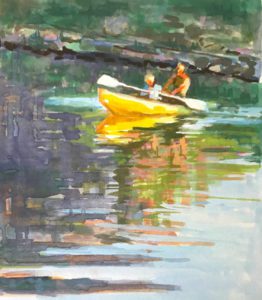
Yellow Kayak, by Holli Harmon
“One could argue that the Santa Ynez River and watershed are the most important natural features in our area, for obvious reasons,” Otte-Demangate said. “It’s been a true privilege to work with these artists, who not only have painted scenes of the area for over a year during a time of exceptional drought, fire, and mudslides, but have intellectually engaged with it as well. Their work and resulting catalog will be an amazing resource for our community for quite a while.”
Beginning in August 2016, the artists explored the Santa Ynez watershed from Jameson Lake to Surf Beach, often trudging through steep and rugged terrain while carrying their painting equipment.
To gain access to many locations, they coordinated with the local water departments, the Santa Ynez Band of Chumash Indians, ranchers and other private land owners along the river’s course. They captured the changes of the seasons, the impacts of a seven-year drought, and the devastation caused by the Rey Fire in August 2016, the Whittier Fire in July 2017, and the Thomas Fire in December 2017.
Images include scenes of the river’s course, still pools, waterfalls, and rock-filled river banks. Animals who call the watershed home are featured, including trout, mule deer, bear, coyotes, and more. The human use of the area is also explored, including ranching, agriculture, the structures and recreation.
“One of the best things about working with our Rose Compass group has been gaining access to places the public doesn’t get to experience,” Connally said. “I dipped my hand into the small cold stream where the first drops of water seeped from the mountain boulders and began their journey along the tributary feeding into the Santa Ynez River. My painting explores the chaos of the wildness of the scene.”
Smith was joined by fellow artists Warner and Strasburg to search for two fish ladders along Salsipuedes Creek, near Jalama Road’s junction with Highway 1. Built years ago, the fish ladders help southern steelhead trout migrate up the creek to spawn.
“We found a peaceful, secluded world below the highway full of wildflowers, birds, pond turtles and hundreds of small fry fish. Some could be steelhead trout,” she recalled.
Special events associated with the exhibit include a nature cruise on Cachuma Lake on Saturday, March 24, and an artists panel discussion at 3 p.m. on the closing Sunday, July 29. A gouache workshop, children’s programs, and a water expert panel discussion are being planned.
Visit www.wildlingmuseum.org for more information, and www.rose-compass.com for blogs by the artists and an added perspective on the project.
The Wildling Museum at Mission Drive and Fifth Street in Solvang is open from 11 a.m. to 5 p.m. weekdays (closed on Tuesdays) and on weekends from 10 a.m. to 5 p.m.
For more information, to volunteer and/or join as a member to support the local arts and nature institution, visit www.wildlingmuseum.org.

